The cucumber (Cucumis sativus) is a popularly grown vegetable that is the fruit of a crawling vine plant in the family Cucurbitaceae. The fruits of this plant are typically cylindrical. Cucumbers are annual plants grown in various climates and soil types. Slicing cucumbers, pickled cucumbers, and seedless cucumbers are the three most common varieties, and each has spawned various cultivars. Originating in South Asia, cucumbers are now widely cultivated and exported around the globe.
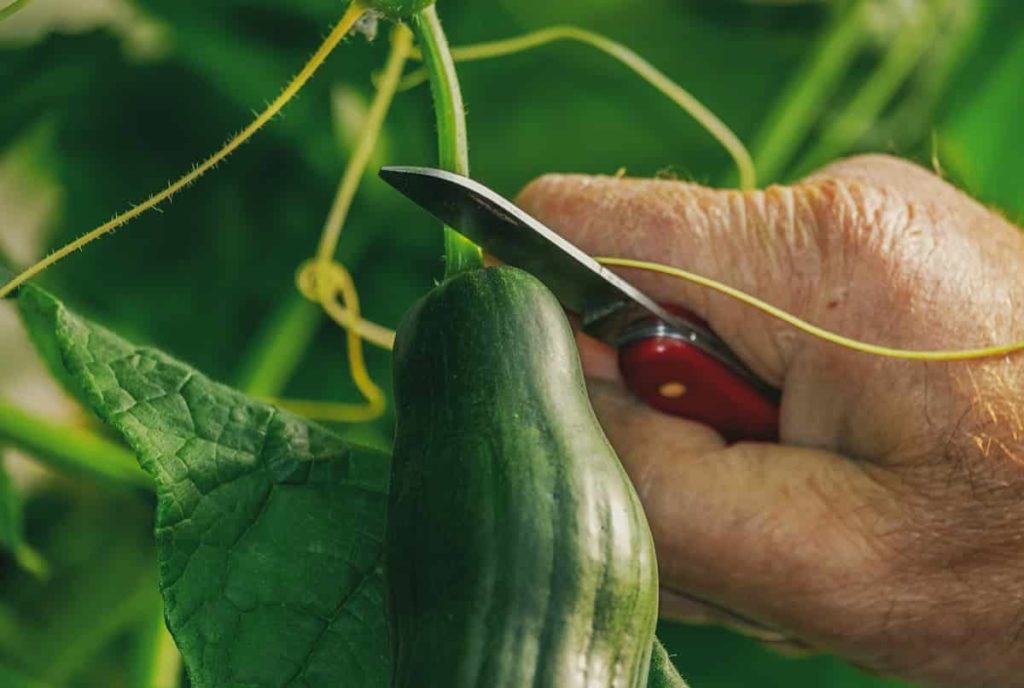
The term “wild cucumber” describes two unrelated plant genera in North America: Echinocytes and Marah. Cucumbers are grown on wooden structures or other supports, as they are vining plants that wrap their thin, twisting stems around the structure as they climb. The plant can also persist in a soilless media, in which case it will lack structural support and simply sprawl along the ground.
The fruits are protected by a canopy of the vine’s enormous leaves. Cucumbers, when fully mature, can grow as long as 62 centimeters (24 inches) and as wide as 10 centimeters (4 inches) in conventional varieties. The water content of cucumbers is extremely high, measuring around 95%. Cucumbers have a hard rind and no internal divisions; hence botanists classify them as pepos, a botanical berry. However, it is commonly prepared and consumed as a vegetable, just like tomatoes and squashes.
How to start cucumber farming/growing in Philippines
Top cucumber-producing regions in the Philippines
In the Philippines, 1,587 hectares are committed to cucumber cultivation. The most cucumber-producing areas are found in the Cordillera Administrative Region (320 ha), the Zamboanga Peninsula Region (also known as region 9) (165 ha), Central Luzon Region (also known as region 3) (140 ha), and Cagayan Valley Region (also known as region 2). (111 ha). The Philippines has started buying cucumbers locally from farmers in Nueva Ecija.
The Philippines’ quality products will use cucumbers from the first commercial harvest in Bon Gabon and Rizal, Nueva Ecija. These cucumbers will be pickled and sold as gherkins. This fulfills the needs of the popular spreads brand by planting and harvesting sweetened relish entirely within the country. More than 300 smallholder farmers on 80 hectares of land have been provided a new source of income thanks to their incorporation into supply chains.
The seedless form of cucumber grown from Netherland seeds results in a greater harvest. Cucumbers only thrive during certain times of the year, so farmers can ensure a steady income by collecting other crops like rice, onions, and garlic during their best seasons and then returning to cucumbers during the off-season.
Best season to grow cucumber in the Philippines
Cucumbers, like many other warm-weather crops, may be grown year-round in many temperate climates. When it comes to growth, approximately 30 degrees Celsius is the ideal temperature, while 18-21 degrees Celsius is the ideal temperature for the night. The soil’s pH should fall between 6.5 and 7.5, and it should be fertile and abundant in organic matter.
It is believed that cucumbers first appeared in the tropics, and they tend to be produced in warm and humid environments. Late spring through late fall is optimal for their growth, but this depends on the local climate. Intolerant to cold, cucumbers thrive in the warmer months of the year. Therefore, the months of April and June are ideal for outdoor planting in moderate areas with extensive growing seasons.
Cucumbers can be planted in warm climates as early as March or April and as late as July. Don’t bother planting until the weather report calls for temperatures of at least 65 degrees Fahrenheit in both the soil and the air. Put down a layer of black plastic over your garden and anchor it with stones or landscaping pins to get the soil ready for planting faster. This can increase soil temperatures by as much as 10 degrees.
In case you missed it: Best Practices to Grow Cucumber at Home: Check How this Guide Helps Beginners
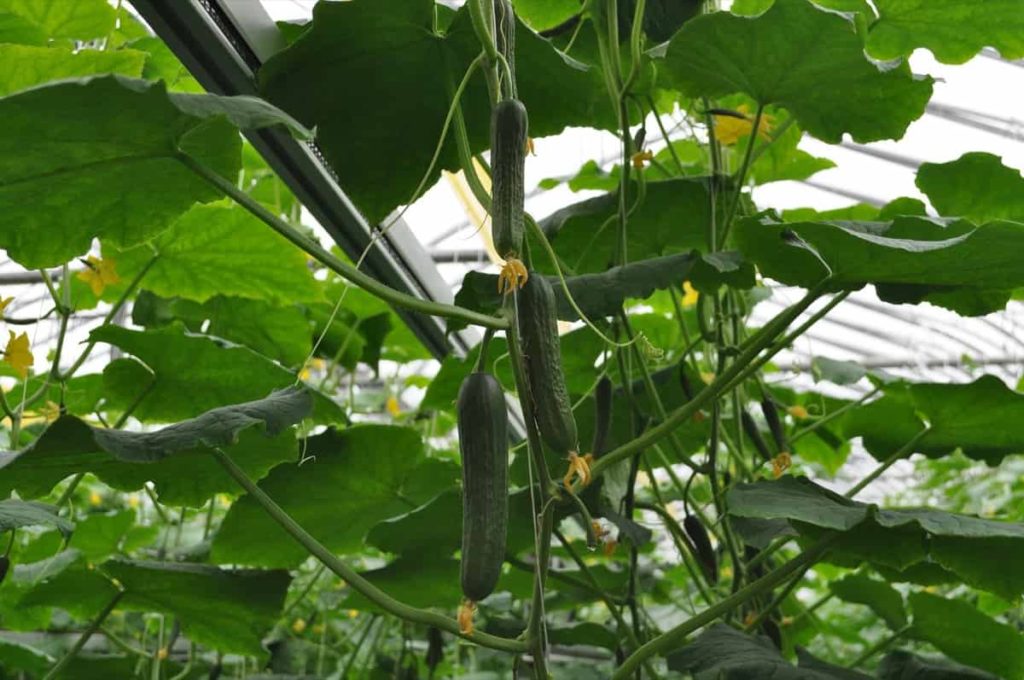
Create planting chambers by poking holes in the plastic and watering using drip or soaker hoses. The time it takes for a cucumber plant to mature and begin producing fruit ranges from 55 to 70 days. Starting cucumbers indoors five weeks before planting them outside or purchasing seedlings from a nursery will speed up the process.
Varieties of cucumber in the Philippines
Pilmaria (UPL Cu-6): A pickling variety that is both gynoecious and open-pollinated. The fruits have a blocky shape and are dark green in color. They are dotted all over with white spines. In the dry season, it matures in 40 days with an average yield of 26.5 t/ha, while in the wet season, it matures in 42 days with an average yield of 27.5 t/ha. It has a low to moderate level of resistance to leaf folders, aphids, and beetles, although it is resistant to watermelon mosaic virus, downy mildew, and fusarium wilt.
Bituin (UPL Cu-11): It is an open-pollinated, high-yielding variety that is ideal for slicing. It has a strong gynoecious nature, and its fruits range in length from 15 to 18 centimeters and are always a consistent dark green color with white spines. It has the capacity to yield between 25 and 35 tons per hectare. Downy mildew, cucumber mosaic virus, and powdery mildew are among the pathogens that it can tolerate with a certain degree of resistance. Aphids, leaf folders, and squash beetles are the three insect pests that occur most frequently.
Burpless: This hybrid vining type produces fruits that can reach as long as 12 inches, but they are often plucked when they are eight or ten inches long for the optimum flavor. Due to its thin, dark green skin, this variety can withstand downy mildew and mosaic virus. The flesh is relatively light, and there is no touch of bitterness. When growing long vines, you’ll need to support them with stakes or trellises. In 50 days, the plants will be ready for harvest, and frequent harvesting will encourage the vines to produce more fruit.
Boston Pickling: The heirloom cultivar known as “Boston Pickling” is a variety of cucumber that may be pickled as well as sliced. Fruits ranging in length from three to six inches are vibrant green in color and have a firm texture growing on robust vines. After a period of 55 days, cucumbers are ready to be picked and harvested.
Soil preparation for cucumber farming in the Philippines
The type of soil also affects plant development. Sandier, lighter soils warm up more quickly and reduce the amount of time it takes to harvest cucumbers, while clay soils produce abundant crops of cucumbers. Sandier soils tend to produce crops more quickly than clay soils do, although both types of soil have their advantages and disadvantages. In order to enhance drainage and growth, excessively heavy soils should be supplemented with compost or manure.
In case you missed it:
The ideal pH for the soil is between 6.5 and 7.5, and it also needs to be rich in organic matter and have a high nutrient content. Digging with a spade should be done three to four times, each time completely plowing the soil. During the plowing process, well-rotted compost, also known as FYM, should be mixed.
Spacing: Cucumber plants need to have a row-to-row distance of 1.5 to 2.5 meters and a plant-to-plant distance of 60 to 90 centimeters.
Process of seed germination for cucumber
In order to get a head start on the field, you can grow cucumber seeds either by sowing the seeds directly into the ground or by putting the seeds indoors in a seed tray. Germination times for cucumber seeds are determined mainly by the temperature of the soil and the surrounding air. Cucumber seeds can germinate in 7-10 days if the soil and surrounding air are warm enough. It takes longer for cucumber seeds to germinate if soil and air temperatures are below or near the lower end of the recommended temperature ranges.
If the weather is cold, the germination may take three weeks. Cucumber seeds germinate best in soil that is between 70 to 85 degrees Fahrenheit. This temperature range is ideal for the soil. Soil temperatures of at least 60 degrees Fahrenheit are sufficient for seed germination, though the odds of successful germination are lower. Replanting may be necessary if the seeds are exposed to even a little frost or a sustained drop in temperature.
Pruning for maximum productivity
When your cucumber plants reach a height of 1 to 2 feet (0.3 to 0.61 meters), it is time to begin pruning them. It would be best if you pruned your cucumber plants after they reach a reasonable size for the maximum yield. On average, you can start pruning them between three and five weeks after they first begin to grow. Cucumbers can be stunted in their growth, and the vine can be destroyed if they are pruned before they are properly mature.
Consistent trimming helps your plants retain their nutrients and resist illness. Even though you do not need to prune them on a specific timetable, it is recommended that you do it anywhere from one to three times per month. If you see any damaged vines or flowers showing signs of disease, remove them immediately. You should check on your plant’s health in between trimmings to make sure it’s doing well.
When you see any spots of browning or wilting, trim them away with a pair of pruning shears. Early in their blooming season, cucumber plants produce long, slender vines. The vine winds its way through the middle of the plant. Find the primary vines that are responsible for producing the suckers that will grow laterally from them. Branches, often known as suckers, are lateral stems that sprout from a primary vine.
Remove them using your fingers or a pair of pruning shears. Remove them off the plant by slicing them off at a 45-degree angle from the base of the stem. Cucumber yields and plant size will both suffer if suckers are allowed to remain on the plant. Discard any cucumbers that start to turn brown, as they will quickly rot otherwise. Cut the cucumber at a 45-degree angle from where it grows on the plant.
Mulching for maximum productivity
When the seedlings have emerged, cover them with mulch. The use of mulch can prevent the return of weeds, which might deprive your cucumbers of nutrients. It also prevents the soil from drying up and keeps it warm. Make use of darker mulch to achieve a higher level of warmth. Straw or wood chips shouldn’t be applied until the soil temperature reaches at least 70 °F (21 °C).
In case you missed it: How to Start Tomato Farming in Philippines: A Useful Growing Guide for Tomato Farmers
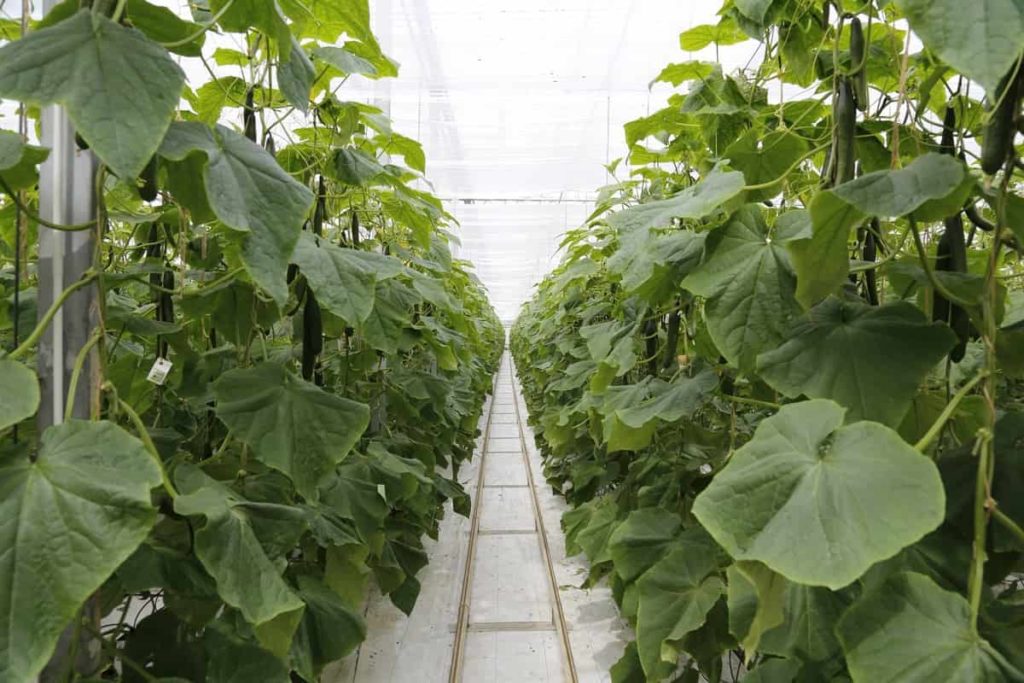
Irrigation and water management
In order to grow plants successfully, a reliable irrigation system is required to deliver huge amounts of water to the growing medium without drowning the plants or suffocating the roots. Trellises not only save space but also help promote air circulation, which in turn lowers the likelihood of diseases spreading. In addition to this, it shields the cucumbers from the moisture damage that would otherwise be caused by resting on the ground. The cultivation of cucumbers is compatible with a wide variety of irrigation techniques.
Mulched production can make use of drip, sprinkler, or surface watering systems, depending on available water, space, and financial resources. A network of thin plastic pipes is used in drip irrigation, which is a method of watering plants that delivers a continuous trickle of water at low pressure. Drip irrigation is also known as trickling irrigation. Keeping the soil’s air-to-water ratio stable by reducing plant roots’ water promotes healthier plant growth.
Sprinkler irrigation is a more direct means of watering crops than other systems, as it sprays water directly onto the soil rather than relying on gravity. Instead, water is dispersed using surface irrigation systems, which use gravity to move water across the area. This allows water storage in the soil and facilitates water movement throughout the system via diffusion and infiltration. In addition, closed irrigation methods, such as drain-to-waste irrigation systems, are used to water some Cucumber plants in greenhouses.
Fertilizer management
The soil should be fertilized with granular fertilizer. Cucumbers benefit most from inorganic fertilizers applied as slow-release granules since they can be used throughout the plant’s growth cycle. Before applying fertilizer, chop up and loosen the soil using a trowel or a small rake. That way, the fertilizer may be worked into the ground more thoroughly. Use high-quality compost or well-matured manure as a natural fertilizer.
Add them to the soil and mix them in at a depth of about 2 inches (5.1 cm). From there, cut and work them in gradually to a depth of 6 to 8 inches (15 to 20 cm) (15 to 20 cm). Adding organic matter can improve soil quality. Cucumbers thrive on sandy soil because it is loose and airy. This sort of soil warms up faster and keeps its heat for longer. Soil with a high clay content can benefit from the addition of organic matter. Additions of peat, compost, or rotting manure help lighten up dense, heavy soil.
Once flower buds appear, fertilize again. Fertilize the soil every two weeks with a moderate liquid fertilizer or organic feed like compost or aged manure if you fertilized it before seeding or every week if you didn’t. Wait until the vines send up runners and the flowers start to blossom. Turning yellow leaves are a sign that your plant needs more nitrogen. Find a fertilizer with high nitrogen content. Never get inorganic fertilizer on the plant’s leaves or fruit.
Pest and disease management
In order to fight off diseases and pests, you might make use of fungicides and pesticides. At the gardening center in your town, you’ll find a wide selection of both organic and inorganic pesticides and fungicides for sale. Spray your plants as soon as you notice any signs of fungal disease or insect infestation.
Sulfur has fungicidal effects. Suppose you do decide to use Sulphur as an organic fungicide. In that case, you should monitor the pH of your soil regularly to ensure that it stays within an acceptable range for the cultivation of cucumbers. Also, always make sure to read and follow the instructions on any insecticides properly.
In case you missed it: Top 43 Kitchen Garden Ideas for Beginners: That Every Gardener Should Know
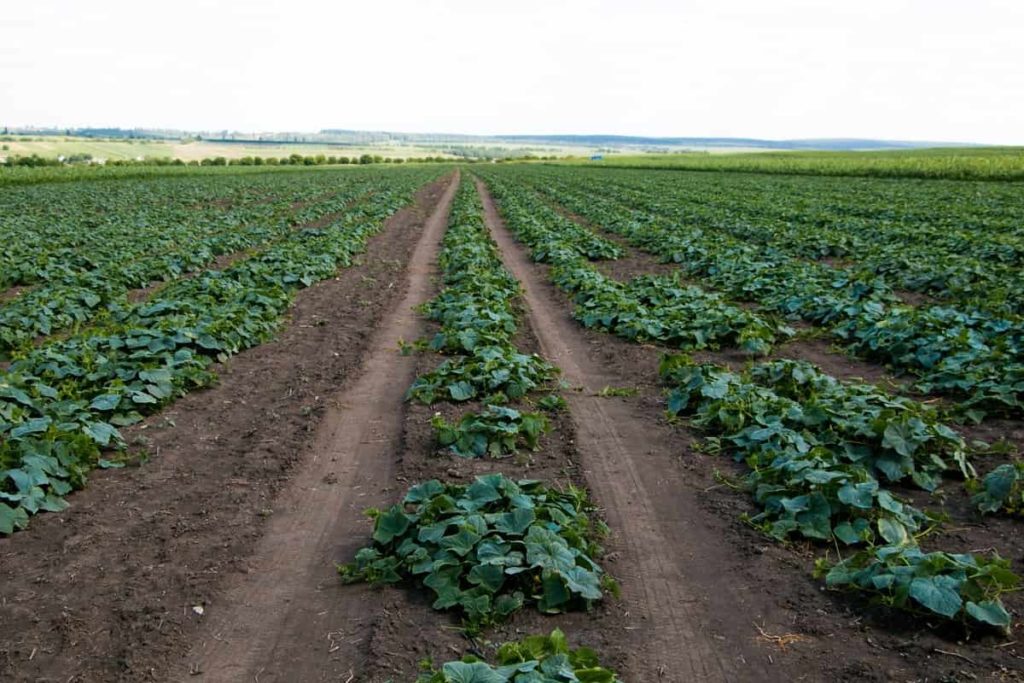
Even organic insecticides, when misapplied, pose a risk to human health. A number of diseases can affect cucumber plants, including Angular Leaf Spot, Bacterial Wilt, Anthracnose, Downy Mildew, Powdery Mildew, and Cucumber Mosaic Virus. Aphids, cucumber beetles, thrips, and spider mites are just some of the insects that can be a problem with cucumbers.
Harvesting
When your cucumbers have reached the ideal size, pick them. If you want a bigger yield from your cucumber plant, you shouldn’t let the cucumbers stay on the vine for too long or let them get too big. The size at which your cucumbers should be harvested is best determined by the kind that you have planted. Pick cucumbers regularly. In general, the more the frequency with which you harvest cucumbers, the greater the yield that you will receive from the plant.
Always be sure to check on your plants and harvest the cucumbers when they reach the ideal size for that particular kind. While you are collecting your cucumbers, you should check for weeds and look over your plants for any signs of disease or insect infestation. In addition to that, you need to monitor the water and the soil as required. Throughout their life cycles, cucumbers require a substantial amount of water. Holding the cucumber in your hand, cut the stem about a quarter of an inch (0.64 cm) above the end of the vegetable.
A large number of people think you can merely pull or twist a cucumber from its vine. When you do this, there is a possibility that you will damage the vine. If you want to preserve the optimum flavor and texture, use your cucumbers as soon as possible after harvesting them. If you need to, you can keep them in the fridge for up to ten days. To prevent drying out in the fridge, wrap them in plastic or place them in a plastic bag with a zipper.
Yield
There were no apparent differences in yield between the four harvested kinds of cucumber. The highest yield per hectare was obtained from the Governor (Hybrid) variety (36,195.23 Kg/ha), followed by the Batangas White variety (32,680.95) and the Poinsett 76 variety (18,428.58 Kg/ha). At 16,390.17 kilos per hectare, Ilocos White had the lowest production. Varietal characteristics and potential were identified as the primary causes of yield variation. In the year 2021, the Philippines had an import volume of 7.98 thousand metric tons and an import value of USD 15.21 thousand.
Cucumber yield per hectare in the Philippines
It reaches maturity in 40 days during the dry season with an average yield of 26.5 tons per hectare (t/ha), while it reaches maturity in 42 days during the wet season with a yield of 27.5 tons per hectare (t/ha).
The time period of cucumber growth
Cucumbers require a prolonged growth season and are often ready to be harvested between 50 and 70 days after planting. Cucumbers develop a bitter flavor if left on the vine for too long, so it’s essential to pick them when they’re at their optimum flavor. This occurs in cucumbers that are not picked when they are ready.
Before a cucumber plant can produce fruit, it must first develop both male and female flowers on the same plant. In most situations, this process occurs during the vegetative stage of growth. The male flowers are the ones that bloom first and grow in groups of three to five, whereas the female flowers only have one stalk and bloom alone.
When the female flowers are pollinated successfully, they produce fruit at the base of the bloom, while the male flowers wither and fall off the plant. Male flowers are ten times more common than their female equivalents. Therefore, if you notice a huge number of flowers falling to the ground, you do not need to be frightened because these male flowers have completed their function.
Number of cucumbers per each plant
It is reasonable to anticipate that a healthy cucumber plant will yield ten large cucumbers or fifteen smaller cucumbers throughout the harvest period of around three weeks. These optimistic statistics are based on big, field-size plantings that professionals handle; nevertheless, gardeners can match or even better these numbers by utilizing cultural approaches that increase the yield of cucumber plants. A higher plant yield can be achieved through careful harvesting.
In case you missed it: How to Start Home Gardening in Asia: For Indoors, Outdoors, Raised Beds, Backyards, Terrace, Pots, and In Containers for Beginners
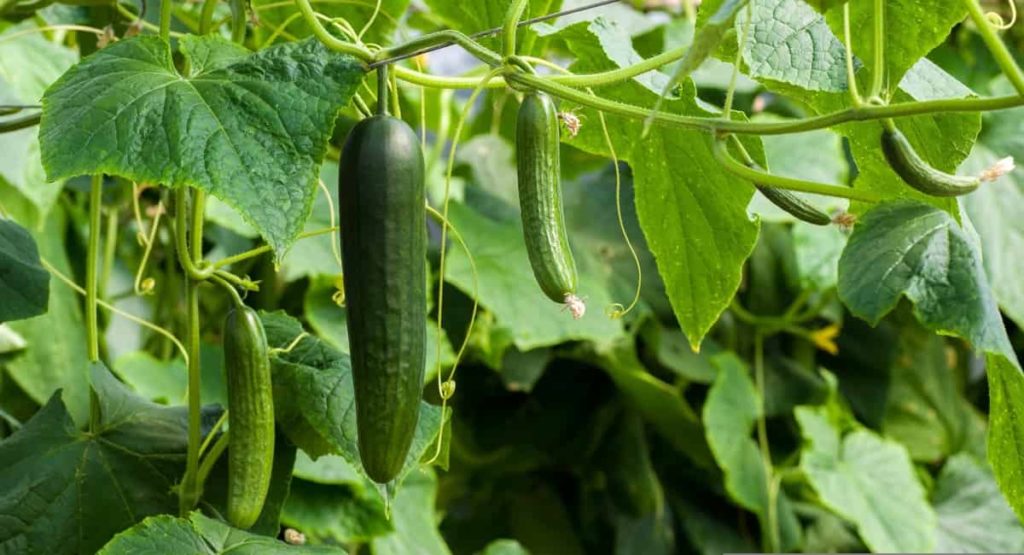
When cucumbers are picked every other day, this encourages the plants to keep producing fruit over the course of a longer length of time that can be harvested. Putting an end to the harvesting process sends the plant the indication that the growing season is over. For the majority of fruit types, you should harvest the fruit when it is still immature. Pickling cucumbers should be harvested when they are between 1 and 6 inches long while slicing cucumbers should be harvested when they are between 6 and 10 inches long.
How often should you water cucumbers
Give the plants lots of areas to develop and direct sunlight, and then train them to climb a trellis or fence. The best results can be achieved with cucumbers by providing them with consistent, deep watering around once every week or more frequently if the temperature is really high for an extended length of time. Fruit that has an unusual form or a poor flavor may result from insufficient or irregular water content.
Cucumber plant’s life span
The harvest time typically falls between fifty to seventy days following planting, depending on the variety, and plants begin to die and wither after production stops for the season. Because cucumbers are grown as an annual crop, the plant cannot self-sustain once the growing season has ended. The plant will perish and cannot be grown again after it reaches the end of its life span of approximately 70 days.
Do not overwater the cucumber plants
Cucumber plants frequently succumb to sudden death due to overwatering or excessive soil moisture. A cucumber plant that has received excessive water would quickly wilt and become droopy before eventually dying. The cucumber plant enjoys water and moisture, but it could sustain irreversible damage if it receives an excessive amount of either.
People give cucumber plants too much water in the hope that it will prevent the soil from drying out. However, if there is excessive water in the soil, the oxygen in the soil will be removed, which will damage the roots. Therefore, even if we make sure to water the cucumber plants at the appropriate intervals, they still succumb to overwatering at times. It happens due to insufficient soil drainage.
If the cucumber plant is grown in soil that does not drain well, there is a risk that the soil will become waterlogged. It will disrupt the structure of the soil, and the plant’s roots and stems will no longer receive support. Roots will be damaged by an excessive amount of moisture, which will also hinder their ability to take up nutrients.
Conclusion
The cucumber is a crop that thrives throughout the warm seasons and can be grown locally throughout the full year. In the Philippines, cucumbers are a significant cash crop that offers farmers a steady source of income. Cucumbers are also known as “pickles.” Because of the possible applications of cucumbers in cuisine, pickling, and slicing, they are a profitable investment both domestically and internationally. Philippines farms use 1,587 hectares of land to cultivate cucumbers.
The Cordillera Administrative Region, Zamboanga Peninsula Region, Central Luzon Region, and Cagayan Valley Region are the top four regions for production. There is no specific time of year for cultivating cucumbers; it can be done year-round. Farmers in the Philippines have the ability to significantly enhance their earnings by capitalizing on an opportunity to cultivate cucumbers. Nevertheless, the most significant risk or challenge is in keeping up with the daily demands of the market for cucumbers of particularly high quality throughout the entire year.
- Profitable Village Farming Business Ideas in 2024
- High-Yield Aquaculture: Fast-Growing Fish for Farming
- Effective Fish Pond Construction Techniques for Beginners
- Irrigation and Water Management in Pineapple Farming
- Blossom to Harvest: Mastering Flowering and Pollination in Papaya Farming
- Pig Fattening Essentials: From Selection to Sale for Beginners
- Raising Wagyu Cattle: A Complete Guide for Premium Beef Production
- Soil Types and Their Water Holding Capacity
- Optimizing Irrigation Schedules for Coconut Groves for Enhanced Yield
- Espresso Your Garden: Coffee Grounds for Healthier Acid-Loving Plants
- The Best Soil Mix for Snake Plants: How to Mix Your Own Snake Plant Soil
- Green Thumb Success: Expert Tips for Cultivating Greenhouse Beans All Year Round
- Bloom All Year Round: The Ultimate Guide to Indoor Hyacinth Care
- Eco-Friendly Gardening: How to Make Liquid Fertilizer from Kitchen Waste
- Ultimate Guide to Grow Anise in Pots: Explore Seed Propagation to Harvesting
- Guide to Raising Chester White Pigs: Discover Breed Facts to Growth Management
- Mastering the Elegance: The Ultimate Guide to Weeping Cherry Tree Care, Planting, and Maintenance
- Ultimate Guide to Planting Garlic in Grow Bags: Growing Strategies for Beginners
- How to Fix Spider Plant Leaf-Related Problems: Natural and Organic Remedies
- 10 Reasons Why Your Tulsi Plant is Shedding Leaves: Home Remedies and Solutions
- Optimizing Growth and Yield: The Advantages of Palm Bunch Ash Fertilizer
- Utilizing Neem Oil Extract as a Natural Pesticide for Hydrangea
- From Soil to Harvest: Various Ways in Which Farmers Can Use AI Tools
- Steps to Encourage and Induce Citrus Flowers: A Comprehensive Guide
- How to Fix Snake Plant Leaf-Related Issues: Natural and Organic Remedies
- Transform Your Garden into a Fragrant Oasis with Raat Ki Rani (Night Blooming Jasmine)
- Discover the Ideal Chicken Breeds for Philippine Farms
- How to Create a Poultry Egg Farm Business Plan for Profits
- Grow Lemon Cucumbers Like a Pro: Insider Techniques for Bountiful Yields
- Ultimate Guide to Caring for Your Pink Princess Philodendron: Tips for Thriving Variegation
- Areca Nut Profit Per Acre: Calculating Yield and Cost of Cultivation
- How Kaveri Chicken is Becoming a More Profitable Breed in Indian Backyards
- Transform Your Barn: 9 Steps to Convert a Horse Stall into a Chicken Coop
- Exploring Suffolk Sheep Disadvantages with Limitations and Challenges
- Guide to Solving Potted Lemon Tree Problems: How to Revive Lemon Tree in Containers
- Steps to Encourage Female Pumpkin Flowers: Best Strategies for More Flowers and High Yields

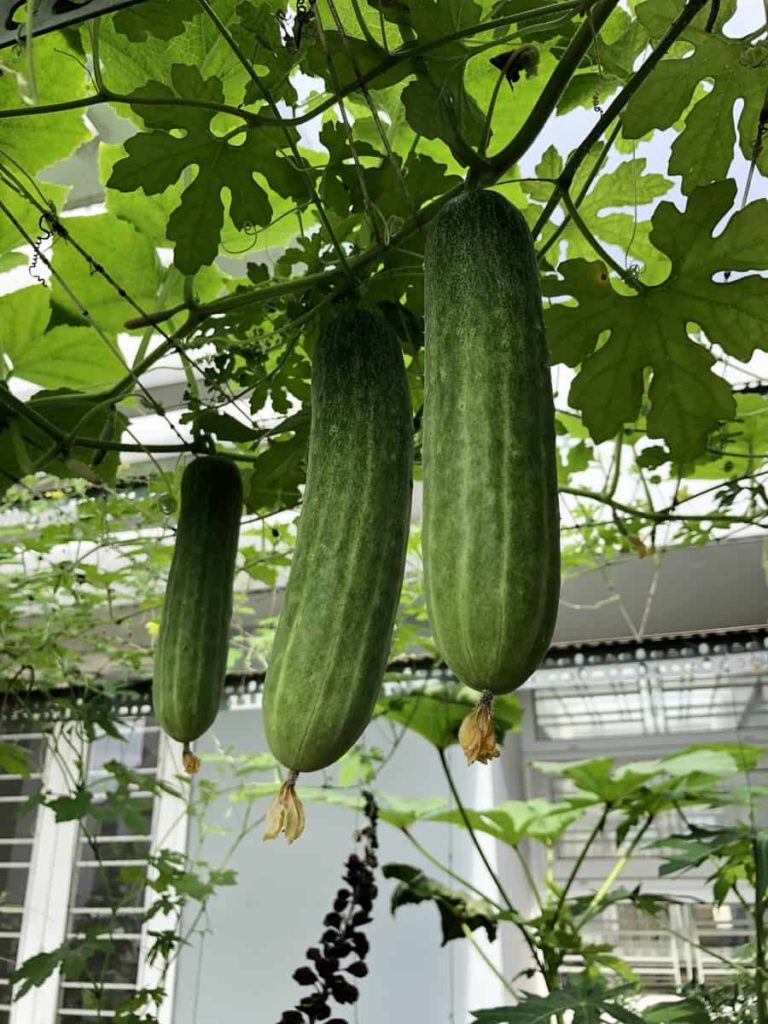
give me the example of the seed procurement of cucumber